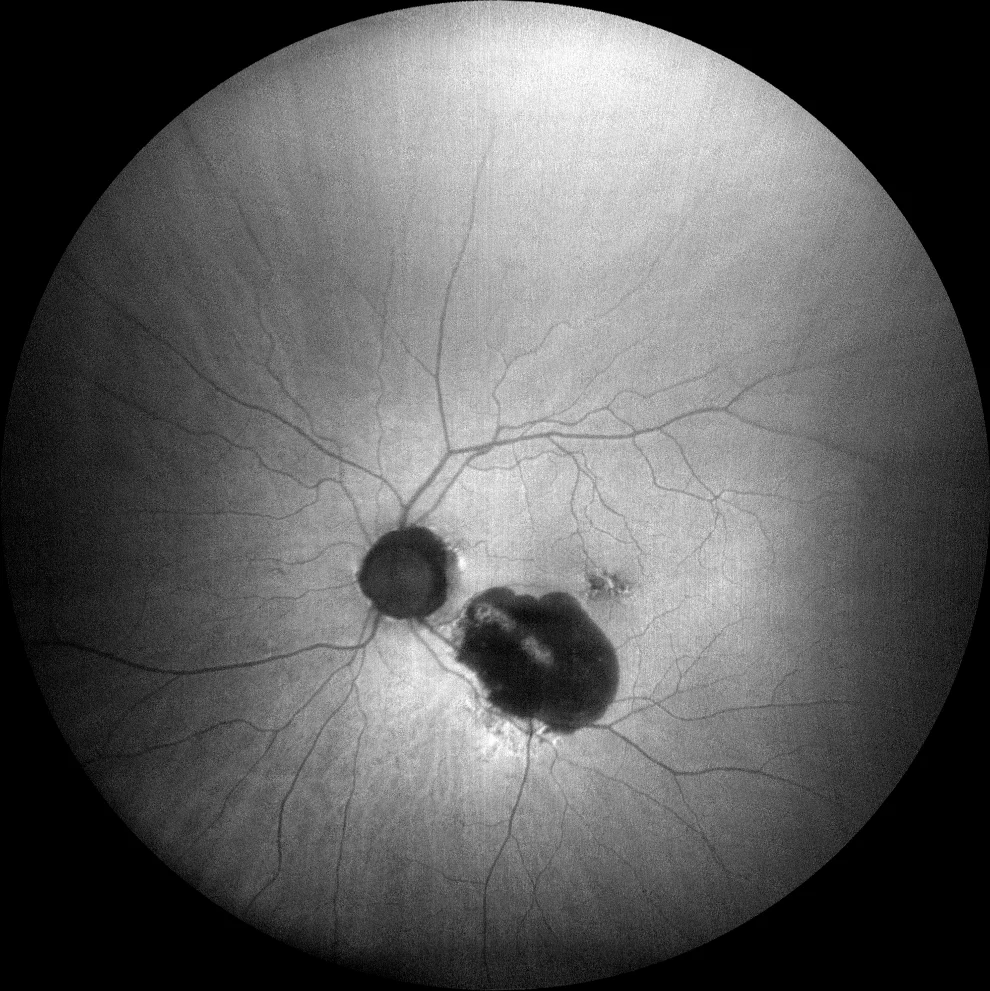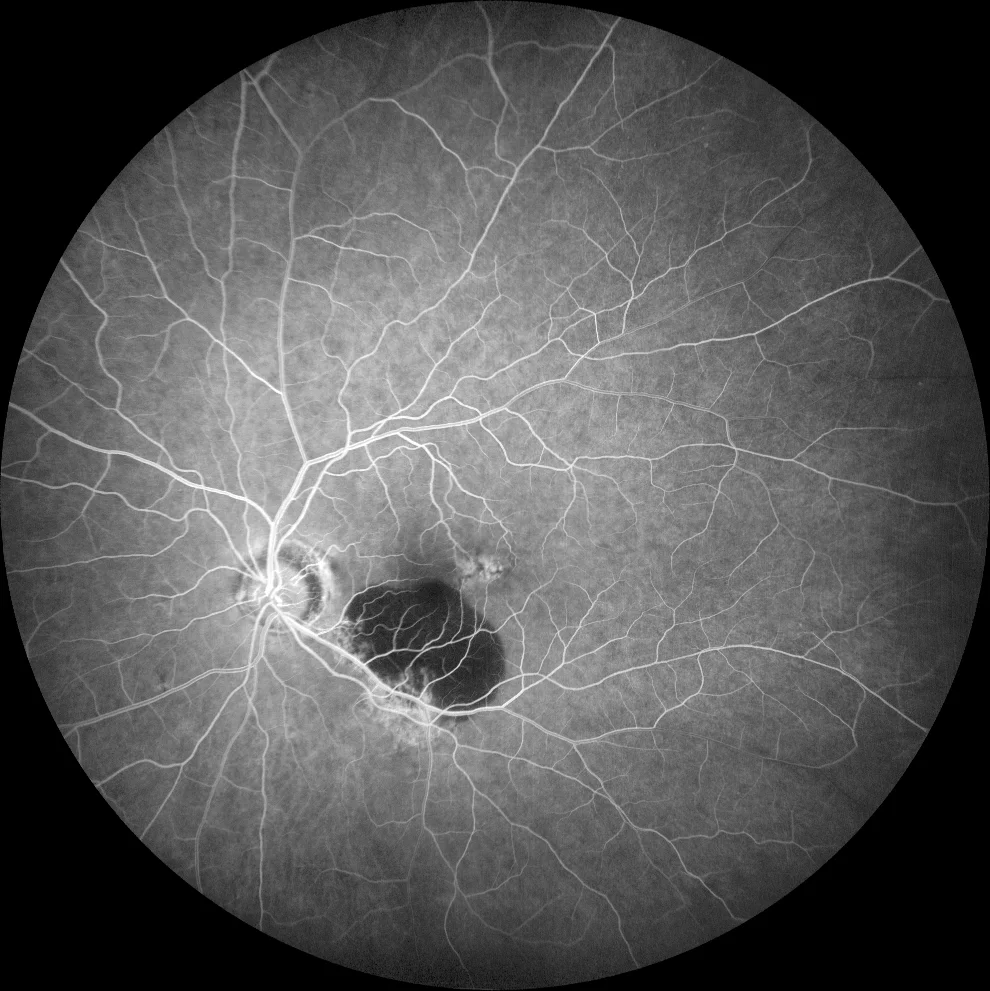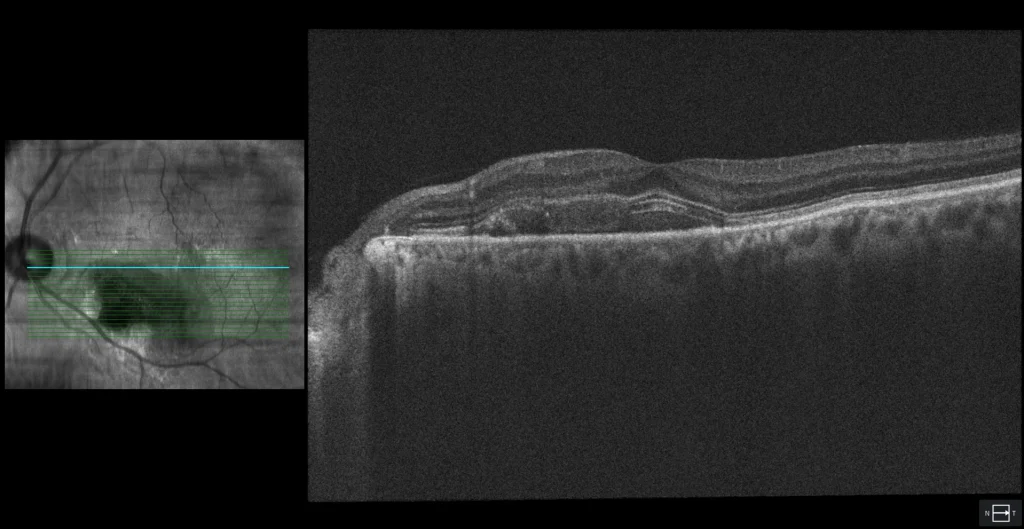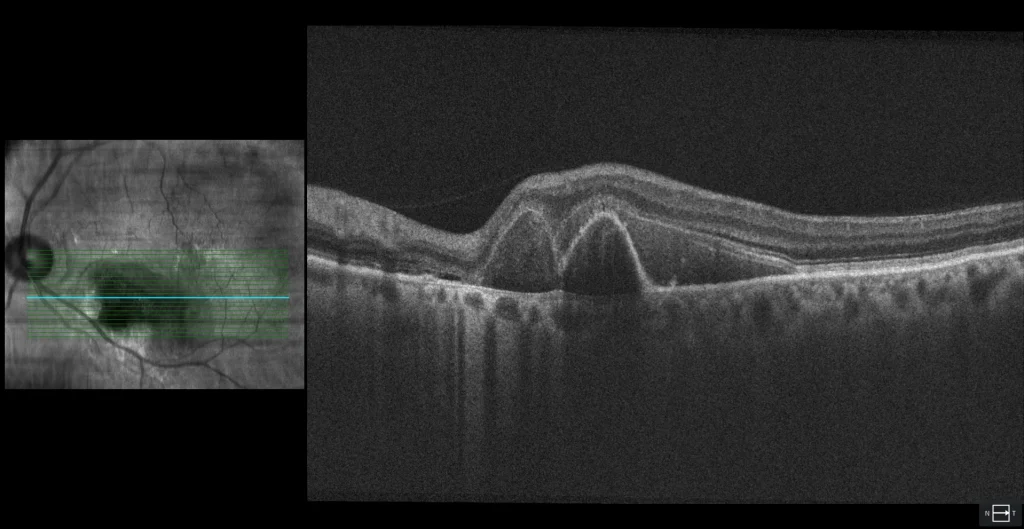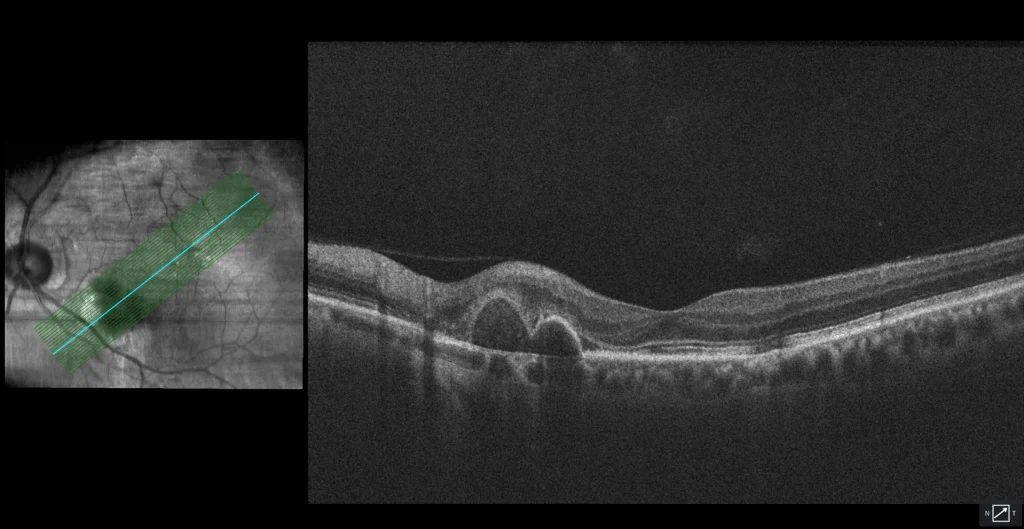Macular hemorrhage
A: Macular hemorrhage with foveal involvement. The hemorrhage has different intensities, suggesting blood at different levels.
B: the lesion is hypoAF due to the screening effect of the hemorrhage that does not allow the baseline AF of the RPE to be seen.
C: the lesion is hypofluorescent due to the screening effect of the hemorrhage, which does not allow the background choroidal fluorescence to be seen.
In a lower section, MHSR can also be seen, as well as 2 very pointed DEPs with hyperreflective content that suggest 2 aneurysmal dilatations with hemorrhagic content.
Description
67-year-old male who comes due to sudden loss of vision in his left eye
VA in left eye was 20/200.
The fundus showed macular hemorrhage with foveal involvement. OCT suggested the presence of aneurysmal dilatations, so antiangiogenic treatment was started. After 1 injection, VA improved to 20/20.


